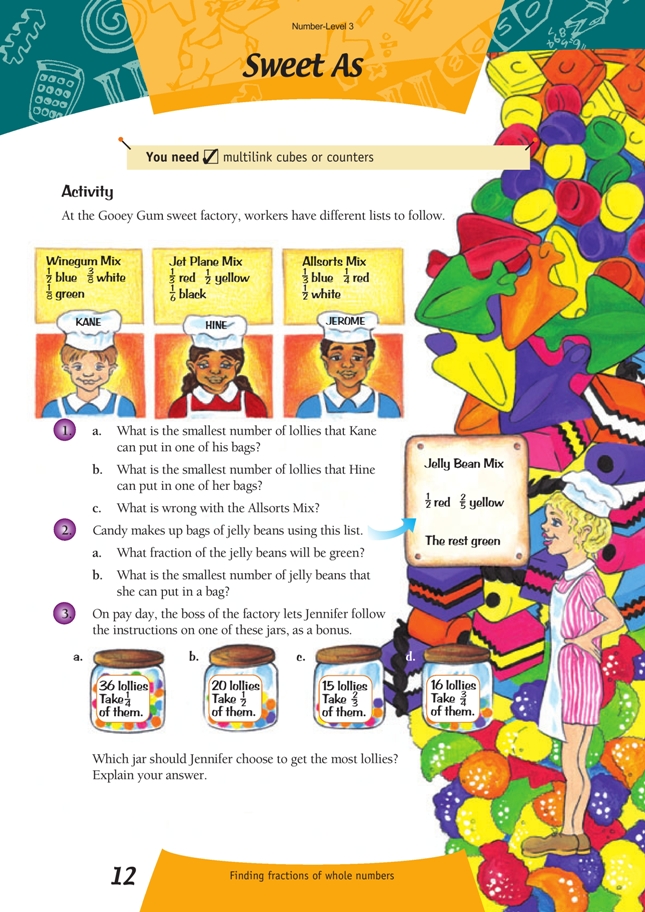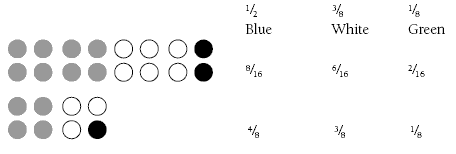This is a level 3 number activity from the Figure It Out series. It relates to Stage 6 of the Number Framework.
A PDF of the student activity is included.
Click on the image to enlarge it. Click again to close. Download PDF (310 KB)
find fractions of whole numbers
Multilink cubes or counters
This activity provides a context for finding fractions of whole number amounts, and it also highlights the use of the common denominator when combining and comparing fractions.
Have students use counters or multilink cubes to model the arrangements in each mix of sweets. If they find different ways of making each mix, have them compare equivalent fractions; for example, Kane’s Winegum Mix may be arranged using 16 sweets or eight sweets:
Ask students “What fraction of Kane’s mix is white?”
Point out that the lowest common denominator is eight, so the smallest number of sweets in the Winegum Mix is eight. Also point out that the fractions have to add up to a whole because the factory has to make a whole packet of sweets.
Students will need to add 1/3 and 1/2 and 1/4 for question 1c. To do this, they will need to translate these fractions to get a common denominator, such as 12.
As explained in the answers, 4/12 + 6/12 + 3/12 = 13/12, which is more than one whole, and so the factory cannot make a whole packet of sweets with that combination of fractions.
In question 3, students could make an attractive chart to present to the class, showing the results of their exploration.
Answers to Activity
1. a. 8
b. 6
c. The fractions add up to more than 1. 1/3 = 4/12, 1/2 = 6/12, and 1/4 = 3/12. This gives a total of 13/12, which is more than one whole.
2. a. 1/10 (1/2 = 5/10, 2/5 = 4/10)
b. 10
3. She should choose jar d, with 16 lollies in it. 1/4 of 36 = 9, 1/2 of 20 = 10, 2/3 of 15 = 10, and 3/4 of 16 = 12. Therefore Jennifer would get more lollies from the d jar.

